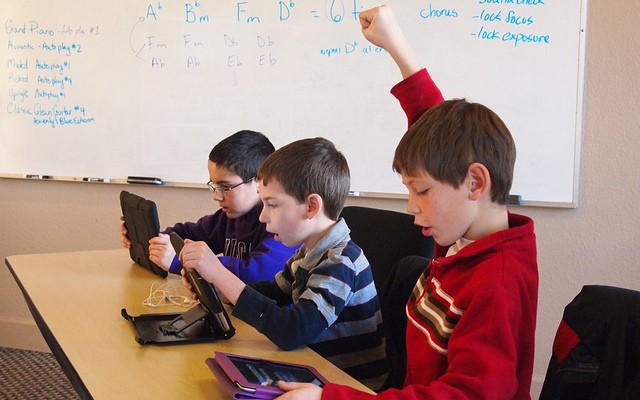“For a student sitting in the median who doesn’t have a game, his or her learning achievement would have increased by 12 percent if he or she had that game,” said Ed Dieterle, Senior Program Officer for Research, Measurement, and Evaluation for the Bill and Melinda Gates Foundation, in a MindShift article last year. In the world of education achievement, 12 percent is significant.
In the same study, SRI also looked at simulations, and in those studies, students improved by 25 percent. That’s huge. But how do they define a simulation? Think of something that’s more interactive than an animated anatomy lesson and less game-like than Nintendo’s Super Smash Brothers.
The SRI report describes it this way: “A computer simulation is a tool used to explore a real-world or hypothetical phenomenon or system by approximating the behavior of the phenomenon or operation of the system.” According to the SRI study, a simulation differs from a game in that it does not employ a points or “currency” based reward system and it doesn’t have level based achievement goals. In addition, simulations have an “underlying model that is based on some real-world behavior.”
The promise of game-based learning lies in the premise that the technology provides an efficient and effective tool with which to replace a points-based extrinsic motivation system with a contextualized hands-on learning experience. Unlike this SRI study, which uses the word “simulation” to describe this kind of learning, I’ve made the distinction between “gamification” and “game-based learning.” As I've argued before, “we don’t need gamification if gamification is about competition and commodification of learning, there’s no need for more commodified motivation. We don’t need more gold coins or badges.” SRI’s findings provide evidence to support this claim.
The key point here is that games themselves are not necessarily competitive. Play is useful because it simulates real life experience -- physical, emotional, and/or intellectual -- in a safe, iterative and social environment, not because it has winners and losers. The achievement lies in the act of learning and understanding itself. Whether or not we make a distinction between “simulation” and “games” the SRI study shows that interactive digital tools can offer an efficient means to provide effective contextualized learning experiences.
For some of us, these findings are hardly surprising. Many teachers have already intuited how beneficial game-based learning can be. According to the recent teacher’s survey undertaken by the Joan Ganz Cooney Center, 55 percent of students play games at least weekly and 78 percent reported using games in the classroom at all.
These teachers are not newbies. The 694 K-8 teachers surveyed have an average of 14.5 years of experience in the classroom. And 30 percent of the teachers said the games are equally beneficial for all students. But there also seemed to be a trend that identified games as most beneficial for “low-performing students,” “students with emotional/behavioral issues,” “student with cognitive or developmental issues.” In other words, students who have been labeled and/or diagnosed because they struggle within the traditional school environment, benefit from game-based approaches. From the study: “65 percent of teachers note that lower-performing students show increased engagement with content, versus only 3 percent who show a decrease.” This is good news.

In addition, 53 percent of teachers find that video games foster positive collaboration between students. Anyone who has watched kids play video games together has seen this trend: They give each other tips and advice, they share tricks. They teach each other to understand the games’ systems. No wonder gameplay YouTube videos are so popular. Gaming inherently involves systems-thinking which is best taught through collaborative learning. Still, 52 percent of teachers assign digital games as independent activities for students. Only about a third (34 percent) “assign digital games to groups of 3-5 students.” And only 29 percent “direct the whole classroom to use digital games together.”
What accounts for this preference toward independent gameplay among teachers? Perhaps it is leftover residue from an old paradigm that values individual achievement over collaboration.
It's becoming more apparent that teachers will need to do more than just embrace new technologies. They will also need to embrace the epistemological foundations of these technologies. There are connected, networked ways of knowing that will dominate the digital future. Sharing and collaboration go hand-in-hand with integrating non-competitive and non-commodified ways of playing. The way students play and learn today is the way they will work tomorrow.


